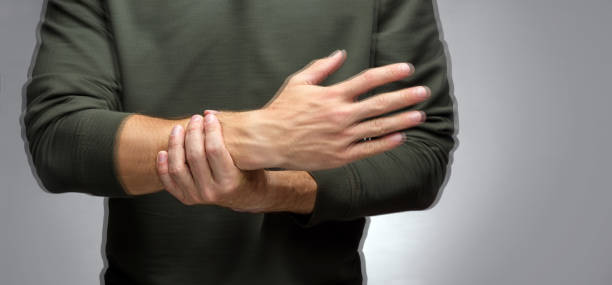
EFFECTS OF 8-WEEK NORDIC WALKING TRAINING ON SELECTED SOMATIC PARAMETERS AND CHANGES IN THE RANGE OF MOVEMENT IN THE JOINTS OF OLDER WOMEN
28 Mar 2025
Progressive involution processes cause negative changes in the human organism, especially in the motor and neural systems, which leads to, among other things, decreases in body balance,
muscle strength, and other motor abilities. Progressive inactivity (hypokinesis) is among the most important causes of this phenomenon. Regular physical activity, adjusted to the age and abilities, should be undertaken in order to reduce deficiencies in physical fitness. The aim of this article is to analyze the relationship between increased physical effort and the range of movement in chosen joints before and after health training among women aged 55 years and older. The study involved 60 inhabitants (x = 58.7 years) from the Jelenia Góra area. They participated in the Nordic walking health training for 8 weeks. The tests were performed twice: directly before and after the training. Basic somatic features, as well as the range of movement in chosen joints, were measured. The questionnaires elicited data concerning education, marital status, number of children, physical fitness, and subjective evaluation of health and physical activity. Statistical analysis of the outcomes was conducted using the Statistica v. 10 program. The results indicate that the majority of measured values changed significantly. Average body mass index (BMI) decreased by 1.19 kg/m2. Abdominal obesity was a dominant feature among the respondents. After the health training, the value of waist-hip ratio (WHR) also slightly decreased. The range of chosen joints movement increased by an average of 3.5°. Systematic physical activity, adjusted to the age and abilities, clearly leads to positive changes in the musculoskeletal system.
muscle strength, and other motor abilities. Progressive inactivity (hypokinesis) is among the most important causes of this phenomenon. Regular physical activity, adjusted to the age and abilities, should be undertaken in order to reduce deficiencies in physical fitness. The aim of this article is to analyze the relationship between increased physical effort and the range of movement in chosen joints before and after health training among women aged 55 years and older. The study involved 60 inhabitants (x = 58.7 years) from the Jelenia Góra area. They participated in the Nordic walking health training for 8 weeks. The tests were performed twice: directly before and after the training. Basic somatic features, as well as the range of movement in chosen joints, were measured. The questionnaires elicited data concerning education, marital status, number of children, physical fitness, and subjective evaluation of health and physical activity. Statistical analysis of the outcomes was conducted using the Statistica v. 10 program. The results indicate that the majority of measured values changed significantly. Average body mass index (BMI) decreased by 1.19 kg/m2. Abdominal obesity was a dominant feature among the respondents. After the health training, the value of waist-hip ratio (WHR) also slightly decreased. The range of chosen joints movement increased by an average of 3.5°. Systematic physical activity, adjusted to the age and abilities, clearly leads to positive changes in the musculoskeletal system.
You may be interested in them

21 Oct 2025
Effect of Nordic Walking on Walking Ability in Patients with Peripheral Arterial Disease

21 Oct 2025
Effects of Nordic Walking on Physical Fitness in Patients with Cancer: A Systematic Review

21 Oct 2025
Nordic Walking Groups for People with Parkinson’s Disease in Community Rehabilitation Settings
© 2024 onwf.org | Original Nordic Walking from Finland







